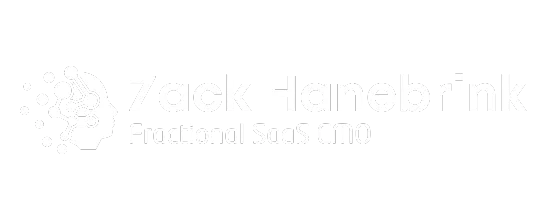
SaaS Marketing
Blog

Integrating a Fractional CMO with Your SaaS Leadership Team
The rapidly growing and intensely competitive SaaS sector requires innovation, skill, and flexibility in ensuring sustained growth. To deal with these hurdles, numerous SaaS businesses are resorting to Fractional Chief Marketing Officers (CMOs) as a cost-efficient and strategic answer. Here, we discuss how and when to bring in a Fractional CMO to your SaaS leadership to align your business goals and ensure lasting success.
What is a Fractional CMO?
A Fractional Chief Marketing Officer (CMO) is a marketing executive who works with an organization on a part-time or contract basis, providing high-level expertise without the financial burden of a full-time hire. They take charge of strategic marketing, demand generation, branding, and customer acquisition while aligning their efforts with the company's overarching goals.
Why SaaS Companies Need a Fractional CMO
The SaaS industry faces unique challenges, including high customer acquisition costs, constant demand for innovation, and pressure to demonstrate rapid growth. Fractional CMOs provide a scalable, flexible solution to these issues:
Cost-Efficiency: Hiring a full-time CMO may not be feasible for early-stage or scaling SaaS companies. A fractional CMO delivers expertise at a fraction of the cost.
Scalability: Their part-time engagement allows businesses to adjust resources as needed.
Expertise on Demand: SaaS companies can leverage their specialized skills and insights without committing to a long-term employment contract.
Key Benefits of a Fractional CMO for SaaS Leadership
Strategic Focus: Fractional CMOs bring a fresh perspective, helping SaaS companies identify growth opportunities and create targeted marketing strategies.
Flexibility: Their part-time role enables businesses to scale efforts up or down depending on growth stages.
Expertise: With years of experience, they bring a wealth of knowledge that can guide SaaS teams toward achieving better results faster.
Steps to Effectively Integrate a Fractional CMO
Integrating a Fractional CMO into your SaaS leadership team requires careful planning and clear communication.
1. Assessing Organizational Needs
Start by identifying specific gaps in your current marketing strategy. Define what you expect from a Fractional CMO, such as improving customer acquisition or reducing churn rates.
2. Setting Clear Objectives
Establish measurable goals that align with your SaaS company's broader strategy. Ensure the Fractional CMO understands these goals and can translate them into actionable marketing plans.
3. Establishing Collaborative Processes
A Fractional CMO must integrate seamlessly with your existing team. Set up communication protocols, regular meetings, and clear reporting mechanisms to foster collaboration.
Characteristics to Look for in a Fractional CMO
When hiring a Fractional CMO, prioritize candidates with the following attributes:
Proven Experience: Look for a track record of driving growth in SaaS or related industries.
Industry Knowledge: Deep understanding of SaaS metrics, customer acquisition strategies, and retention tactics.
Cultural Fit: Ensure they align with your company’s values and leadership style.
How Fractional CMOs Drive Revenue Growth for SaaS
A skilled Fractional CMO leverages data-driven strategies to fuel revenue growth:
Customer Acquisition: By optimizing marketing funnels and reducing customer acquisition costs (CAC).
Retention and Upselling: Implementing customer engagement initiatives to increase lifetime value (CLV).
Addressing Challenges in Integrating a Fractional CMO
Handling Internal Resistance
Some team members may view an external leader as a threat. Open communication, trust-building, and involving them in the onboarding process can alleviate concerns.
Ensuring Alignment with Existing Leadership
A Fractional CMO should align marketing initiatives with business goals through regular updates and collaborative planning.
Comparing Fractional CMOs to Full-Time CMOs
Cost: Fractional CMOs are more affordable for startups and scaling companies.
Engagement: While full-time CMOs offer dedicated focus, fractional leaders provide flexibility.
Duration: Fractional engagements are ideal for short- to medium-term needs, while full-time roles suit long-term strategies.
Measuring the Success of a Fractional CMO in SaaS
Evaluate the impact of a Fractional CMO using key performance indicators (KPIs):
Customer Lifetime Value (CLV)
Customer Acquisition Cost (CAC)
Churn Rate
Marketing ROI
When to Transition from a Fractional CMO to a Full-Time Role
As your SaaS company grows, consider transitioning to a full-time CMO when:
Marketing needs exceed part-time capacity.
Long-term strategy development becomes a priority.
The business reaches a stable growth phase.
Tools and Platforms to Support Collaboration with a Fractional CMO
Use tools like Slack, Asana, and HubSpot for seamless communication and project management. Leverage Google Analytics and Tableau for tracking performance metrics.
Frequently Asked Questions About Fractional CMOs in SaaS
What is the typical engagement duration for a Fractional CMO?
Most engagements last 6–12 months but can vary based on needs.
How do I ensure a smooth transition?
Clear onboarding processes and alignment of goals are critical.
Can a Fractional CMO work remotely?
Yes, many operate successfully in remote or hybrid roles.
What is the cost of hiring a Fractional CMO?
Costs range from $5,000 to $20,000 per month, depending on experience and scope.
What industries benefit most from Fractional CMOs?
SaaS, tech startups, and growth-focused businesses are ideal candidates.
How soon can I expect results?
Significant improvements are often seen within the first 3–6 months.
Conclusion
Integrating a Fractional CMO into your SaaS leadership team can be a game-changer, providing cost-effective expertise and strategic insight. By carefully planning the integration process and measuring success through relevant KPIs, SaaS companies can unlock growth and scale effectively.

Quick Links
Get In Touch
© Copyright 2025. Zack Hanebrink - Fractional CMO for SaaS. All rights reserved.

